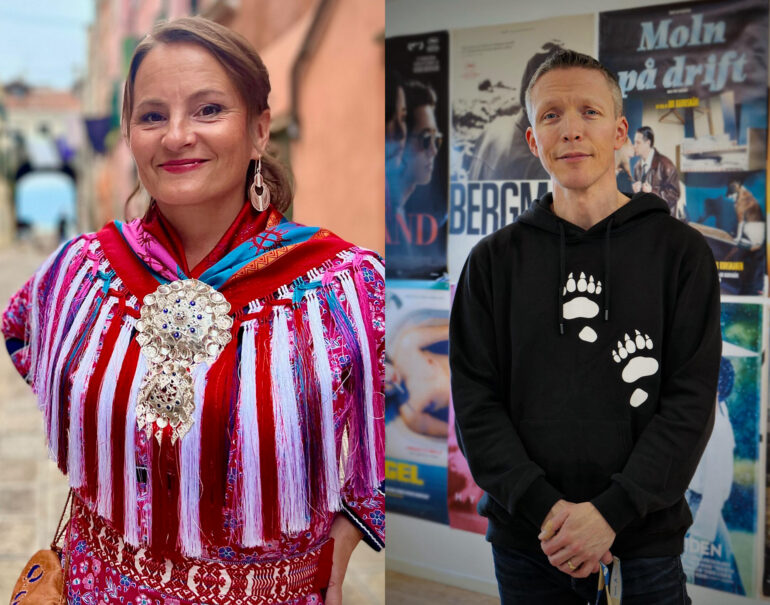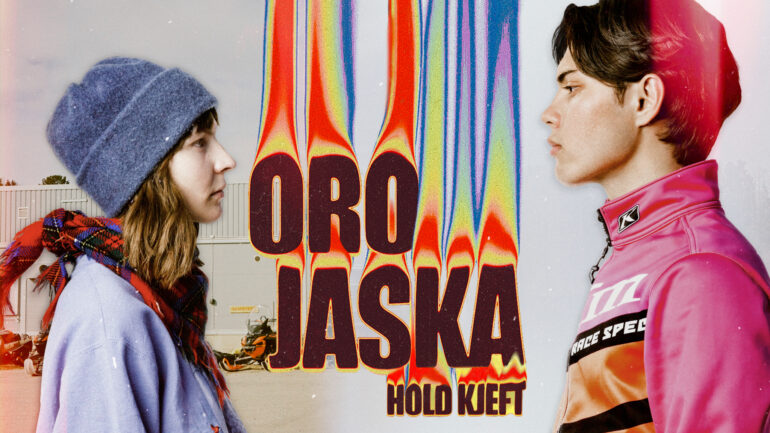WRITTEN BY: Davide Abbatescianni
International Sámi Film Institute’s Anne Lajla Utsi and Film Greenland’s Inuk Jørgensen reflect on the Alliance’s impact, the growing global presence of Indigenous cinema, and key takeaways from the EFM.
At this year’s European Film Market (EFM), the Indigenous Cinema Alliance (ICA) celebrated its first 10 years of activity by showcasing the best in global Indigenous film and TV with an exciting line-up of projects and events. The initiative ran from 13-17 February and hosted market screenings, panels, roundtables, artist talks, and a dedicated “Bridging Borders” pitch event. The latter featured six new projects, including Inuk Jørgensen’s The Ship that Wasn’t There (Greenland/Demark) and Ann Aurebekk’s Porslin (Sápmi/Norway/Sweden).
The event aimed to foster global collaboration for Indigenous film projects, showcasing innovative co-productions that seek partnerships and backing to bring their unique stories to the international stage.
At the EFM, NFTVF caught up with Anne Lajla Utsi, Managing Director of the International Sámi Film Institute (ISFI), and the aforementioned Jørgensen, Vice-Chair of Film Greenland. During our chats, we delved into the growing presence of Indigenous cinema and its future prospects, among other topics.
Utsi first highlights ICA’s evolution from its origins as NATIVe – Indigenous Cinema at the EFM in 2015 to a thriving international coalition today. “Our mission has always been to create culturally safe spaces for Indigenous professionals, foster international sales, and secure co-productions,” she explains. “Rebranding to the Indigenous Cinema Alliance in 2025 marks a new chapter, strengthening our global connections.”
For Jørgensen, ICA’s impact extends beyond film markets. “One key takeaway from a Greenlandic perspective is how interconnected we are as Indigenous storytellers,” he says. “Our challenges and histories resonate across borders, from the Nordics to Aotearoa and beyond. This shared experience fosters meaningful collaborations.”
Panels on co-productions, narrative sovereignty, and distribution at EFM reinforced the necessity of a united Indigenous front. “While Indigenous filmmaking communities are at different stages of development, the ICA provides inspiration and strength,” Utsi notes. “The solidarity we build here is fundamental to securing our rights to tell and own our stories.”
Jørgensen echoes this sentiment, pointing to the shifting industry perspective. “There’s a growing interest in supporting Indigenous narrative sovereignty. For Greenland, where we are not classified as a minority within the Nordics, accessing funding has been difficult. Yet, recent co-productions with the Nordics and Canada, along with Greenland’s eligibility for the Nordic Film Prize, have elevated our storytelling internationally.”
A highlight of the ICA’s presence at EFM was the Indigenous film screening, featuring trailers from a diverse selection of global Indigenous productions. “The artistic quality and thematic richness of our films demonstrate their rightful place on the world stage,” Utsi says. “From horror to comedy, these new perspectives redefine Indigenous storytelling.”
Meanwhile, the Sámi and Greenlandic film industries share common challenges in securing funding and industry recognition. “In Sámi cinema, the biggest issue is narrative sovereignty,” Utsi states. “Despite ISFI’s role in nurturing a new generation of Sámi filmmakers, we lack the financial means to fully support feature films and series. The Norwegian government’s ongoing discussions on granting ISFI a national mandate could be a game-changer.”
Greenlandic filmmakers face similar struggles, albeit within a different funding structure. “Up until recently, opportunities for Greenlandic film funding were scarce,” Jørgensen notes. “Now, with the Greenland Film Institute set to launch in 2026, we’re on the cusp of real change. Film.gl has played a crucial role in positioning Greenland within Nordic film commissions, ensuring a stronger industry presence.”
Next, both Utsi and Jørgensen emphasise the importance of strategic collaborations. ISFI has fostered partnerships with NRK and Yle Drama, resulting in successful series such as the NFTVF supported Shut Up (Oro Jaska) and A Sámi Wedding (Heajastallan). “NRK’s commitment to Sámi drama has been instrumental,” Utsi says. “Now, we’re collaborating on a Sámi-Finnish-Italian co-production, bringing new international dimensions to our storytelling.”
Film Greenland is also leveraging Nordic partnerships. “Our involvement in the Nordic Film Commissioners network, alongside attending key industry events like EFM, Focus in London, and Göteborg Film Festival, has strengthened Greenland’s industry visibility,” Jørgensen shares. “As we transition towards having our own film institute, these relationships will be crucial.”
Internationally, ISFI’s collaboration with Netflix has opened new avenues for Sámi cinema. “Netflix Grow Creative has supported us since 2022, helping to develop producers and bring projects like Stolen to a global audience,” Utsi notes. “We’re now discussing what our 2025 partnership will look like.”
For Jørgensen, Greenland’s rising profile in international co-productions signals a promising future. “There’s a growing appetite for Greenlandic storytelling, from shorts to features. With our film institute launching soon, we aim to capitalise on this momentum and establish Greenland as a key player in Indigenous cinema.”
As ICA enters its second decade, both Utsi and Jørgensen stress the need for continued advocacy, investment, and collaboration. “Structural changes, not just apologies, are needed to ensure Indigenous narrative sovereignty,” Utsi asserts. “We expect governments and industry stakeholders to commit to these changes.”
For Jørgensen, the broader industry shift towards Indigenous storytelling is encouraging. “EFM has shown us that interest in our stories is growing. Now, it’s up to us to seize these opportunities and push Indigenous cinema even further onto the global stage.”

